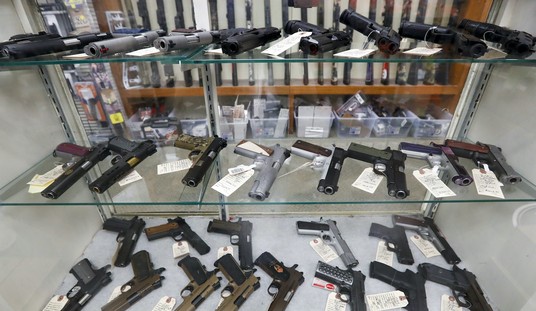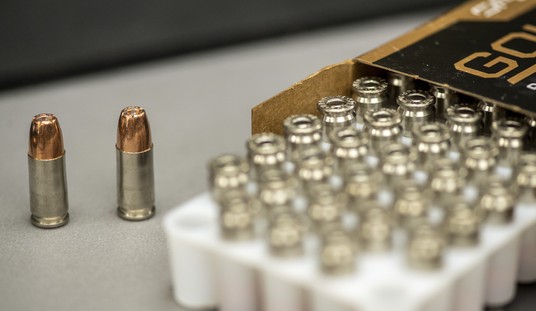The last year has seen some significant successes in the restoration of our Second Amendment rights. From coast to coast, unreasonable gun laws written for the express purpose of harassing law-abiding citizens and infringing on the rights of the body politic are being struck down. Before the Bruen text/history/tradition test, just about every infringement was rubber-stamped by biased anti-Rights judges who always put a thumb on the scale in favor of restrictions.
Unfortunately, there is a sort of “poison pill” in the Court’s Bruen decision that provides a small loophole that anti-Rights judges can drive a truck through. This is the “unprecedented Societal Concern or dramatic technological changes” caveat in the Supreme Court’s opinion:
While the historical analogies here and in Heller are relatively simple to draw, other cases implicating unprecedented societal concerns or dramatic technological changes may require a more nuanced approach. The regulatory challenges posed by firearms today are not always the same as those that preoccupied the Founders in 1791 or the Reconstruction generation in 1868. Fortunately, the Founders created a Constitution—and a Second Amendment—“intended to endure for ages to come, and consequently, to be adapted to the various crises of human affairs.” McCulloch v. Maryland, 4 Wheat. 316, 415 (1819) (emphasis deleted). Although its meaning is fixed according to the understandings of those who ratified it, the Constitution can, and must, apply to circumstances beyond those the Founders specifically anticipated. See, e.g., United States v. Jones, 565 U.S. 400, 404–405 (2012) (holding that installation of a tracking device was “a physical intrusion [that] would have been considered a ‘search’ within the meaning of the Fourth Amendment when it was adopted”).
To be fair, the Court’s opinion talks about the importance of the right to keep and bear arms and how it has a fixed meaning and leaves it up to judges to apply those basic principles to circumstances beyond what the Founders specifically anticipated. The context, however, is not the infringement of rights but consistent support for rights over time. To drive home the point, the Court provides an example from United States v. Jones, and talks about how the installation of a GPS tracker was a physical intrusion that would have been considered a search. The Founders lived during an era when there was no electricity, but the Fourth Amendment is still applicable to small GPS devices that use signals from orbiting satellites to determine someone’s location.
But judges with inherent bias will take advantage of even the smallest opening, and we saw that yesterday at the United States District Court for the District of Connecticut in National Association for Gun Rights v. Lamont, which deals with Connecticut’s “assault weapons” ban. The plaintiffs in this case sought to get a preliminary injunction to stop the enforcement of Connecticut’s “assault weapons” ban. The Court denied the injunction, saying that the plaintiffs have failed to show their likelihood of success on the merits.
Bruen noted that “analogical reasoning under the Second Amendment is neither a regulatory straightjacket nor a regulatory blank check,” cautioning courts against upholding any law that only “remotely resembles” an analogue or striking laws down which do not have a historical “twin.” Id. at 2133.
a) Whether Violence Perpetrated through Use of Assault
Defendants submit that the Challenged Statutes address an unprecedented societal concern and dramatic technological change that requires a more nuanced analogical inquiry to determine if the regulation is consistent with firearms regulation in America. Amici Brady and March for Our Lives support Defendants’ position that because semi- automatic firearms were not introduced until “more than half a century after ratification of the Fourteenth Amendment,” the lack of a historical tradition of regulating them dating back to the Second and Fourteenth Amendments’ enactments is “meaningless,” and the Court should instead take a broader view of what may be a comparable analogue. (Brady Amicus at 17.) Plaintiffs rejoin that because lawmakers in the Founding era were familiar with mass casualty and mass murder, mass shootings are instead a “general societal problem that has persisted since the 18th century.”42 (Pls. Reply at 7) (quoting Bruen, 142 S. Ct. at 2132.)
Semi-autos have been around for a long time and hardly represent a dramatic technological change. They are overwhelmingly used by law-abiding citizens for lawful purposes. Mass killings are not an “unprecedented societal concern,” and have been committed using sharp objects and vehicles also, with dramatic body counts. The District Court is taking advantage of a tiny opening like the culvert at Helm’s Deep and blowing up the fortifications protecting our right to keep and bear arms.
This is par for the course, however. Justice Scalia provided a small opening in DC v. Heller when he wrote, “From Blackstone through the 19th-century cases, commentators and courts routinely explained that the right was not a right to keep and carry any weapon whatsoever in any manner whatsoever and for whatever purpose.”
The Supreme Court will soon need to weigh in, so this opening is not stretched in unforeseen ways to attack our rights yet again.









Join the conversation as a VIP Member